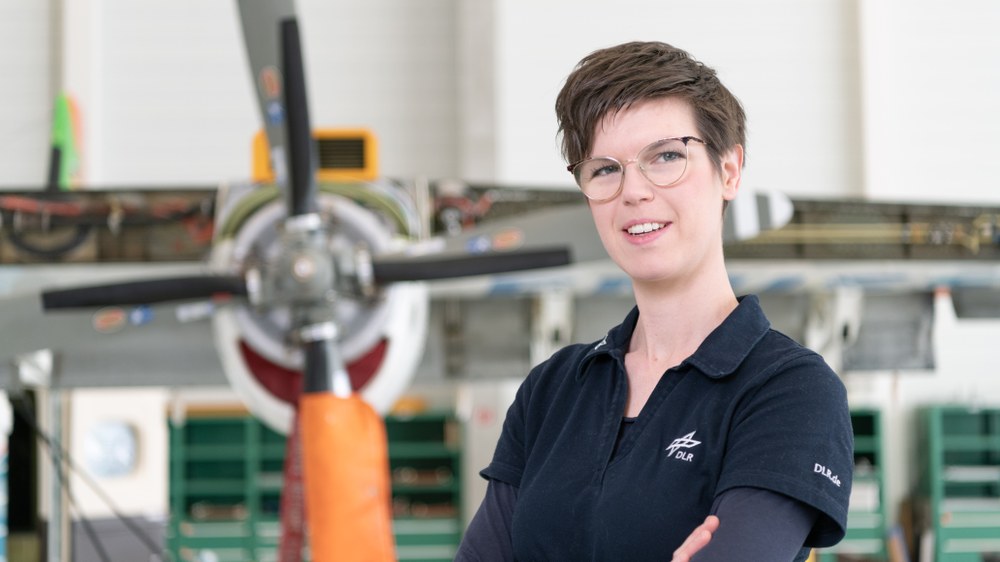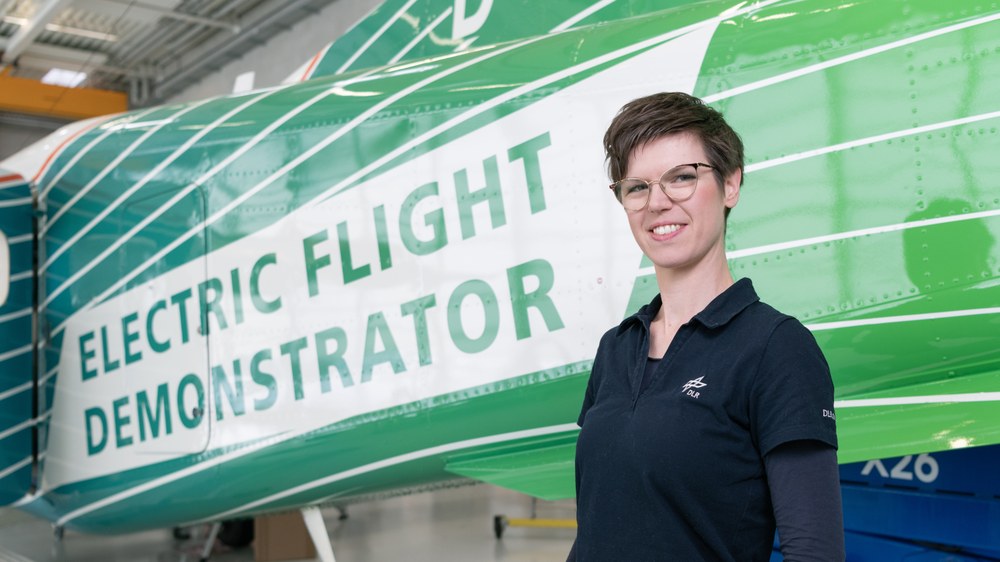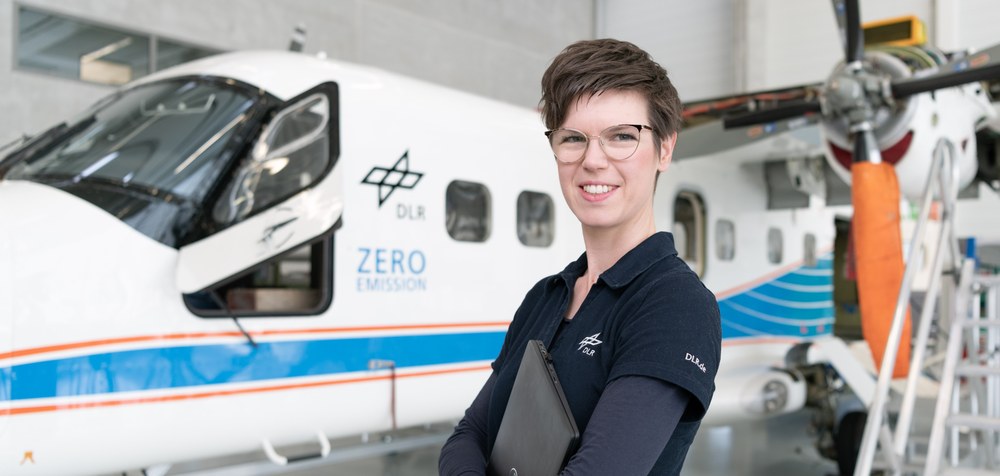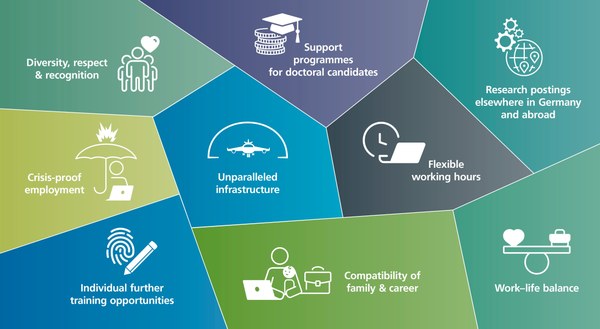Stefanie de Graaf
Field of study: Aerospace engineering
Now: Institute of Electrified Aero Engines
Stefanie de Graaf studied aerospace engineering and in 2021, she joined the DLR Institute of Electrified Aero Engines in Cottbus as a research associate. She is now head of the Architecture and Integration of Propulsion Systems department.
Stefanie's area of work: the system design and integration of propulsion systems. In this interview, she shares insight into her work.
Stefanie, what do you look forward to when coming to work in the morning?
Stefanie: I look forward to working with my team and other colleagues, overcoming unexpected challenges and learning something new every day.
What are you researching or working on?
Stefanie: My team and I are researching novel and sustainable propulsion architectures and integrating them into aircraft. Our work focuses on aspects that are key for applications in aviation: power density, safety and reliable operation in exposed environmental conditions. There are important challenges related to hydrogen, electromagnetic compatibility and heat and cold management in different phases of flight that need to be overcome to integrate existing technologies or those still under development into aircraft.
„My team and I are researching novel and sustainable propulsion architectures and integrating them into aircraft“
What does your typical working day involve?
Stefanie: At our institute, no day is like the one before. Part of the daily routine in my working group is researching synergies that can be used within the electric drive or in hybrid propulsion systems to increase the overall power density. We look for design solutions to the challenges of integrating electrified propulsion systems into aircraft, using tools such as CAD, CFD and FEM.
As head of the department, I also work on strategy and design content for my research group and department. I am involved in many meetings – for planning and exchange within my group, department and the institute; coordination, public relations and project acquisition are also part of my day-to-day work.

Where and how is your work being used?
Stefanie: My research group plays a central role within the Institute because a lot of findings come together here. But other groups can also conduct detailed investigations based on our results.
Our joint research results can be used to further develop and test low-emission electrified propulsion systems and thus build a sustainable future of aviation.
„DLR – and the city of Cottbus and its people – have made it easy for me to quickly feel at home here and to familiarise myself with this new field“
What are the highlights of your work?
Stefanie: Helping my staff succeed gives me great pleasure, whether it is through a suggested solution or the joint development of new ideas. I try to promote the individual potential of my team members and thus lead them to deliver great initial results for our young institute.

What special skills can you make good use of in your job?
Stefanie: My social skills such as my communication skills and my intrinsic motivation have proven to be essential. I also use my ability to integrate individual work steps and task areas into an overall framework and weave them into the planned projects and processes. An interdisciplinary approach to problems is particularly important in the field of electrified propulsion systems. My career so far has prepared me very well for this.
Leave us a final thought.
Stefanie: It was a big step for me to move back to Germany – my old home – and especially to Cottbus – a new home – from Vancouver in Canada in 2021 to work at the DLR Institute of Electrified Aero Engines. This decision brought many professional and personal changes but it has been one of the best decisions of my life so far. DLR – and the city of Cottbus and its people – have made it easy for me to quickly feel at home here and to familiarise myself with this new field. I am very grateful for that!




